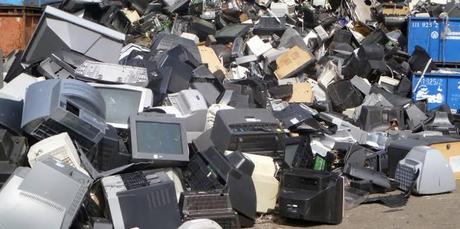One of the pinnacles of modern pop culture occurs when a beloved, long running television show manages to end on a satisfying note at a point in its life cycle before the quality starts to slip.
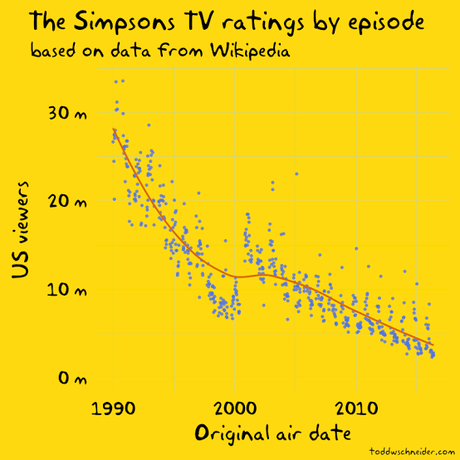 Unrelated The Simpons Data
Unrelated The Simpons Data
Ending a series is fraught with challenge, especially if the series has maintained a high level of success. The audiences will have steep expectations, and having invested their time and emotion in the experience they practically demand satisfaction. Leaving story threads open or questions unanswered can add to the public discourse surrounding the show, but they can frustrate the fans. Opening new questions in the final scene and cut to black with no intention of addressing matters will outright piss people off.
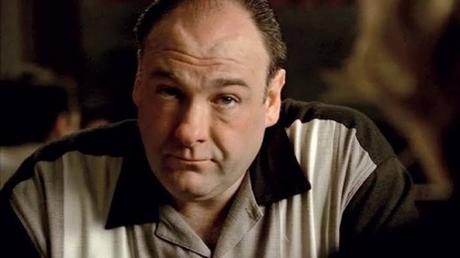
This will at least get people talking. They'll be salty, but they'll be talking. There are worse ways to end the series. You could undo everything that mattered about the previous episodes, killing the emotional connection the audience had with the characters so thoroughly that it taints any desire to rewatch the show.
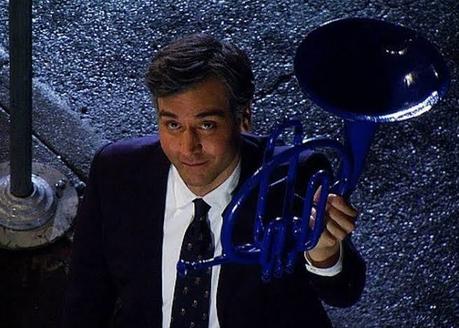
Or maybe you'll spend your final hour of original broadcast time masturbating your own brilliance directly into the camera, producing a finale that your fans have quietly agreed not to acknowledge ever again.
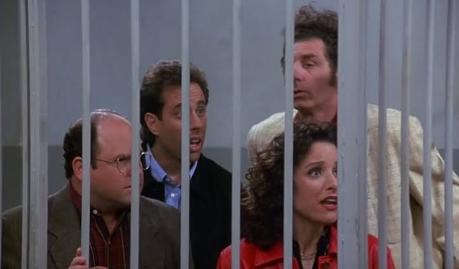
This past week we've seen the rare totally satisfying ending happen not once, but twice in the same night and with oddly complementary programs. Those two programs are animated nihilistic look at a faded celebrity Bojack Horseman and morality and philosophy discussion structured as a sitcom set in the afterlife The Good Place. What makes this especially note-worthy is the difficult position each show has put itself in. When you've constructed a sympathetic character who is inherently wrong or damaging it's all the more difficult to give the audience a satisfying ending as they walk the line between redemption and justice. You have to appreciate how difficult this can be.
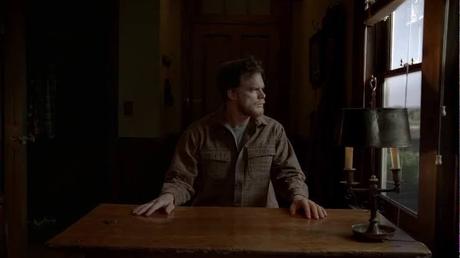
Ok, I'll stop this now.
By strange coincidence, the leads of both Bojack Horseman and The Good Place are terrible people. The titular Bojack (played with a desperate anger by Will Arnett) and the deceased Eleanor Shellstrop (a wonderfully balanced character played by Kirsten Bell). Bojack is an alcohol and drug abuser driven by ego and fear, using and discarding people with self justified excuses. Eleanor, whilst she was alive, cheerfully scammed pensioners out of their savings with fake medical products. In the afterlife she stole another persons identity to remain undetected in the 'Good Place' rather than face judgement for her past actions.
For those who are unfamiliar, Bojack Horseman follows the misadventures of Bojack Horseman, a famous actor whose fame peaked some 20 years earlier with a cheesy family sitcom about a bachelor raising three orphans. In the years since he has avoided acknowledging his fading star, instead burying his insecurities and failings under drinking, drugs and sex. The Good Place is more complex a concept, following Eleanor Shellstrop as she arrives in the afterlife. Being one of the very select few to be admitted to the 'Good Place' would be a matter for celebration...except Eleanor should not be there. She's a crummy person who has been mistaken for a more remarkable person of the same name, and now she must find a way to earn a place before she is eternally damned.
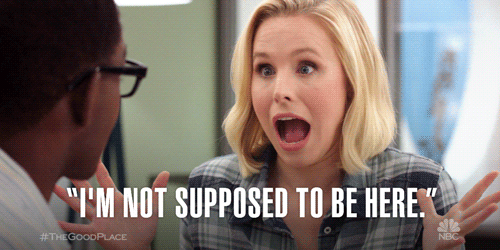
The initial drive of each show focused on the redemption of our lead characters. Eleanor's redemption is a matter of survival. She has to learn the value of selflessness and she cannot fake it. In doing so she not only earns herself a chance at redemption, but a chance for every soul on the planet to earn redemption and a place in the Good Place. When she eventually leaves existence, it's having fully redeemed herself without compromising her sense of self. She generally becomes a better person over the course four seasons.
Bojack has a very different journey. Although he pushes himself to improve through career success and relationships, Bojack repeatedly relapses into toxic behaviour, and harms the people close to him. From extreme behaviour to minor adjustments, every attempt Bojack makes to better himself is echoed by a deeper dive into chaos, ultimately committing transgressions that cannot be forgiven. Although the audience may want to see Bojack overcome the psychological damage caused by his abusive parents, they know that redemption may not be possible if he is to be held accountable for his actions.
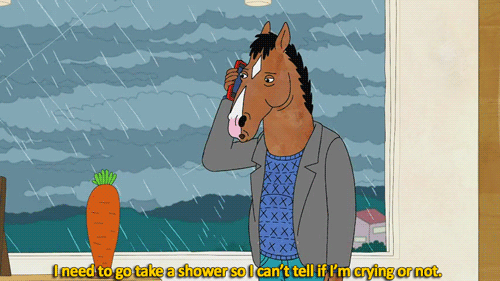
As each show expanded its lore and created more complex situations for its protagonists they increased the presence of the supporting cast. Eleanor is joined in the afterlife by a diverse group of personalities. Chidi (William Jackson Harper), Tahani (Jameela Jamil) and Jason (Manny Jacinto) are her fellow deceased souls who collectively discover that their 'Good Place' is a new, experimental Bad Place. Running this nightmare scenario is Michael (Ted Danson) and the artificial intelligence Janet (D'Arcy Carden). Over time the damned souls and their captors unite to prove that all people are capable of redemption and seek to overhaul the entire afterlife system. In the show's finale each character's personal desire's and goals are recalled, achieved and they in turn decide that they have done all they can within their existence and they voluntarily surrender themselves to the void.
At this point you might be tempted to pop into the comments and complain about the lack of spoiler warning, but if you got this far into an article about TV shows ending and don't want spoilers it's your own fault.
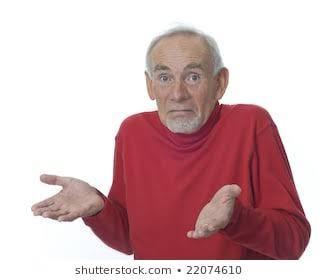
Surprisingly, given its style, the supporting cast of Bojack Horsemen are a more complex bunch of people (and animals?). Princess Carolyn (Amy Sedaris) begins as Bojack's feline agent and sometimes partner who grows increasingly more desperate to become what she considers to be a complete person. Bojack's room-mate Todd (Aaron Paul) bounces from scheme to scheme trying to reconcile his off-kilter personality with the world around him. Diane Nguyen (Allison Brie) is a ghostwriter for Bojack's memoir who gets drawn into a role as Bojack's moral compass, unable to accept that she deserves better treatment even after she marries the consistently optimistic and fun-loving Mr. Peanut-Butter (Paul F. Thompkins), an actor with a similar history to Bojack who has managed to achieve a sense of happiness.
Unlike the cast of The Good Place, who all attainted perfect happiness and satisfaction after lifetimes of being tormented is as cut and dry as it becomes. Whilst Bojack is eventually jailed for some of his crimes, his friends mostly resolve their past damage and failings in part by distancing themselves from Bojack himself. In the end, the resolution Bojack deserves is that he is not only left alone but has his legacy erased when he his digitally removed from his star-making role in family sitcom Horsin' Around. This is also a reflection of real-world controversies surrounding notable celebrities and the industry response to them...or lack of. This a bitter-sweet but satisfying conclusion.
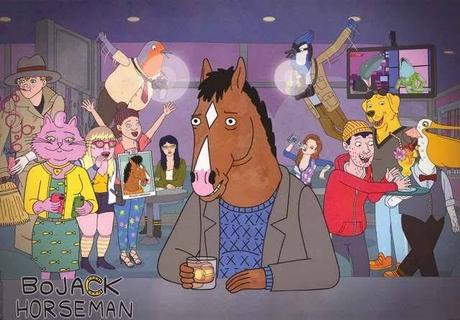
Behind these characters and their stories are some interesting folk. Michael Schur is an experienced sitcom writer and creator, having worked on The Office and co-created the esteemed Parks and Recreation and Brooklyn Nine-Nine. The Good Place stands out not only for achieving the high level of quality as his previous works but it's a more complex project. Raphael Bob-Waksberg was less established in show-business at the time of Bojack Horseman's inception (but he was working on it), with the show being picked from 5 pitches for animated shows. Surprisingly it was Michael Eisner who put the show into production, except he wanted to drop the show-business angle. Bob-Waksberg approached cartoonist and friend since high-school Lisa Hanawalt to design the show's visuals, contributing the iconic and unique world the characters inhabit.
Another thing that contributed to the success of the show is the control that these creators had over their work. Both shows maintained a steady tone, continuity and worked towards a planned resolution. These are shows that tell a complete story with a well timed ending, as opposed to shows that will pad the story, repeat itself and slowly diminish in quality over time. Regardless of changes in cast and creators, the show will carry on until it feels like an empty shell. Both Bojack Horseman and The Good Place tell a story about people seeking redemption in a complex and depressing world.

Two shows that fully engaged their audiences with comedy, surrealism, morality without pandering to them, instead challenging them to think differently and addressing the issues of the time. Bojack Horseman deals with racism, sexism, parental and institutional abuse, media influence and more, whilst The Good Place deals with larger themes of moral judgement, purpose and selflessness. Now both shows have ended on a perfect note and it's hard to imagine the television industry is going to achieve this again.
We're not suggesting that there aren't good shows to come. Neil Gaiman is adapting his comic series The Sandman for television. That's gonna be awesome. We can't wait. But for two premises created for the television format to be this good and to end at the right time in the right way feels so satisfying we don't need television any more. Pack it up, folks.
